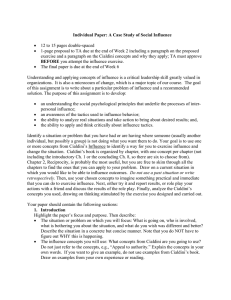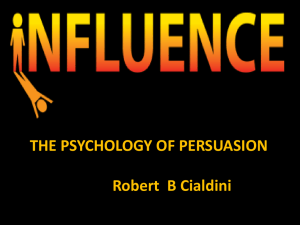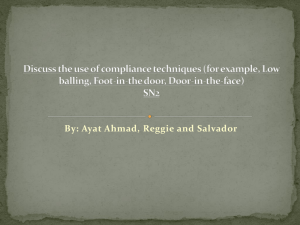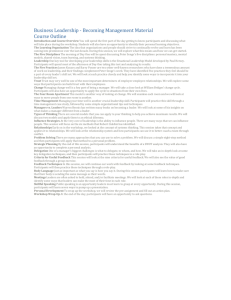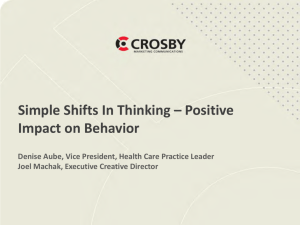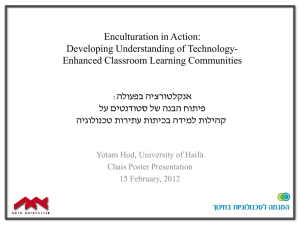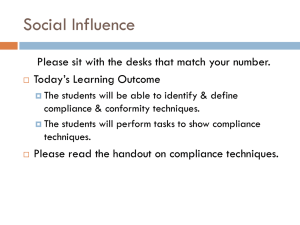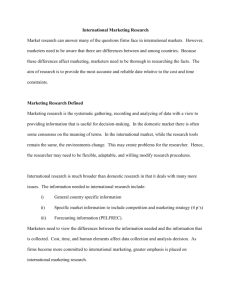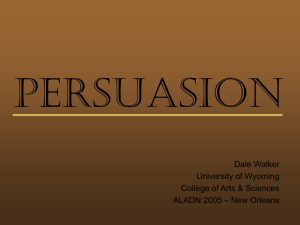Dr. Robert Cialdini and 6 principles of persuasion
advertisement
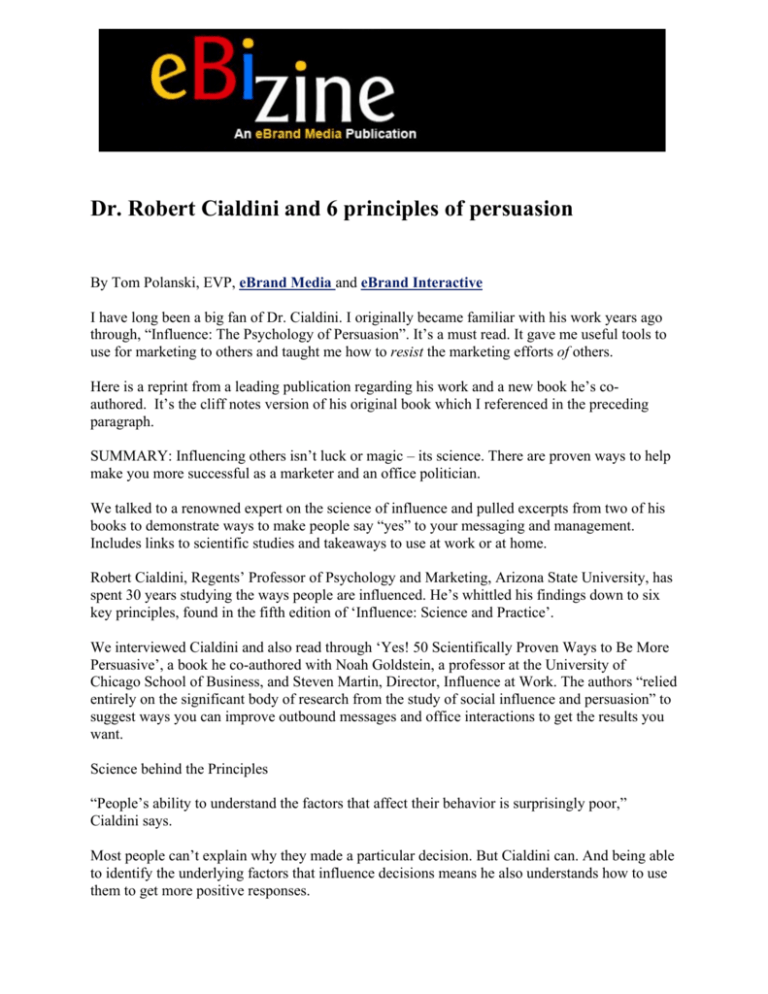
Dr. Robert Cialdini and 6 principles of persuasion By Tom Polanski, EVP, eBrand Media and eBrand Interactive I have long been a big fan of Dr. Cialdini. I originally became familiar with his work years ago through, “Influence: The Psychology of Persuasion”. It’s a must read. It gave me useful tools to use for marketing to others and taught me how to resist the marketing efforts of others. Here is a reprint from a leading publication regarding his work and a new book he’s coauthored. It’s the cliff notes version of his original book which I referenced in the preceding paragraph. SUMMARY: Influencing others isn’t luck or magic – its science. There are proven ways to help make you more successful as a marketer and an office politician. We talked to a renowned expert on the science of influence and pulled excerpts from two of his books to demonstrate ways to make people say “yes” to your messaging and management. Includes links to scientific studies and takeaways to use at work or at home. Robert Cialdini, Regents’ Professor of Psychology and Marketing, Arizona State University, has spent 30 years studying the ways people are influenced. He’s whittled his findings down to six key principles, found in the fifth edition of ‘Influence: Science and Practice’. We interviewed Cialdini and also read through ‘Yes! 50 Scientifically Proven Ways to Be More Persuasive’, a book he co-authored with Noah Goldstein, a professor at the University of Chicago School of Business, and Steven Martin, Director, Influence at Work. The authors “relied entirely on the significant body of research from the study of social influence and persuasion” to suggest ways you can improve outbound messages and office interactions to get the results you want. Science behind the Principles “People’s ability to understand the factors that affect their behavior is surprisingly poor,” Cialdini says. Most people can’t explain why they made a particular decision. But Cialdini can. And being able to identify the underlying factors that influence decisions means he also understands how to use them to get more positive responses. Be forewarned, though: The knowledge you’re about to receive shouldn’t be used to push shoddy goods or set unfair prices. “When these tools are used unethically as weapons of influence … any short-term gains will almost invariably be followed by long-term losses.” Below are Cialdini’s six principles of persuasion – along with excerpts from real-world experiments. Note: All experiments cited are from ‘Yes! 50 Scientifically Proven Ways to Be More Persuasive’. 6 Principles of Influence Principle #1: Reciprocation Reciprocation recognizes that people feel indebted to those who do something for them or give them a gift. For marketers, Cialdini says: “The implication is you have to go first. Give something: give information, give free samples, give a positive experience to people and they will want to give you something in return.” o Experiment conducted Social scientist Randy Garner published a 2005 experiment that tested whether sticky notes could persuade people to respond to a marketing survey (see hotlinks below). He sent one-third of the surveys with a hand-written sticky note requesting completion, one-third with a blank sticky note, and one-third without a sticky note. Results: - Hand-written note: 69% response rate - Blank sticky note: 43% response rate - No sticky note: 34% response rate “[The principle of reciprocation] was born out in the fact that not only did those who received the hand-written note have twice as much compliance, the quality of the answers they gave was significantly better,” Cialdini says. o Application for Marketers The reciprocation principle explains why free samples can be so effective. People who receive a free, unexpected gift are more likely to listen to a product’s features, donate to a cause, or tip a waitress more money. The gifts do not have to be expensive or even material; information and favors can work. Principle #2: Social Proof When people are uncertain about a course of action, they tend to look to those around them to guide their decisions and actions. They especially want to know what everyone else is doing – especially their peers. “Laugh tracks on comedy shows exist for this very reason,” Cialdini says. o Experiment conducted Cialdini and a team of colleagues ran a soon-to-be published experiment to see which types of signs would most encourage Arizona hotel visitors to reuse towels. They tested four types of signs: - #1 Cited environmental reasons to encourage visitors to reuse their towels - #2 Said the hotel would donate a portion of end-of-year laundry savings to an environmental cause - #3 Said the hotel had already given a donation and asked: “Will you please join us?” - #4 Said the majority of guests reused their towels at least once during their stay Percentage of those who reused towels per request: - Sign #1: 38% - Sign #2: 36% - Sign #3: 46% - Sign #4: 48% When guests found out that most people who stayed in the same hotel reused their towels, they were more likely to comply with the request. “What’s most interesting to me,” Cialdini says, “is that the most effective strategy was entirely costless to the hotel. But I’ve never seen it used by any hotel room in any city.” o Application for marketers Testimonials from satisfied customers show your target audience that people who are similar to them have enjoyed your product or service. They’ll be more likely to become customers themselves. A similar principle applies to television commercials that say: “If our lines are busy, please call again.” Instead of saying “Operators are standing by.” The first response implies that other people like your offer so much that the phone lines are busy, which may persuade others to act similarly. Principle #3: Commitment and Consistency People do not like to back out of deals. We’re more likely to do something after we’ve agreed to it verbally or in writing, Cialdini says. People strive for consistency in their commitments. They also prefer to follow pre-existing attitudes, values and actions. o Experiment conducted In 1987, social scientist Anthony Greenwald approached potential voters on election-day eve to ask whether they would vote and to provide reasons why or why not. 100% said they would vote. On election day, 86.7% of those asked went to the polls compared to 61.5% of those who were not asked. Those who publicly committed to voting on the previous day proved more likely to actually vote. o Application for marketers People want to be both consistent and true to their word. Getting customers or co-workers to publicly commit to something makes them more likely to follow through with an action or a purchase. Ask your team members if they’ll support your next initiative and say why. Getting people to answer ‘yes’ makes them more powerfully committed to an action, Cialdini says. For instance, don’t tell people: “Please call if you have to cancel.” Asking “Will you please call if you have to cancel?” gets customers to say yes, and measurably increases their response rates. o Note: Age matters The older we get, the more we value consistency. And that makes it harder for older people to make a change. Researcher Stephanie Brown co-authored a 2005 study titled “Evidence of a positive relationship between age and preference for consistency,” published in the Journal of Research in Personality. The study confirmed the belief that older people become “set in their ways.” The solution? Praise them for making good past decisions, based on the information they had at the time. Then find ways to stress the consistent values connecting old actions and purchases with values underlying any new actions or purchases. Principle #4: Liking “People prefer to say ‘yes’ to those they know and like,” Cialdini says. People are also more likely to favor those who are physically attractive, similar to themselves, or who give them compliments. Even something as ‘random’ as having the same name as your prospects can increase your chances of making a sale. o Experiment conducted In 2005, Randy Garner mailed out surveys to strangers with a request to return them. The request was signed by a person whose name was either similar or dissimilar to the recipient’s. For example, Robert James might receive a survey request from the similarly-named Bob Ames. (See hotlinks below.) According to a study reported in Yes!, “Those who received the survey from someone with a similar-sounding name were nearly twice as likely to fill out and return the packet as those who received the surveys from dissimilar sounding names (56% compared to 30%).” o Application for marketers “One of the things that marketers can do is honestly report on the extent to which the product or service – or the people who are providing the product or service – are similar to the audience and know the audience’s challenges, preferences and so on,” Cialdini says. So , for instance, sales people could improve their chances of making a sale by becoming more knowledgeable about their prospects’ existing preferences. Principle #5: Authority People respect authority. They want to follow the lead of real experts. Business titles, impressive clothing, and even driving an expensive, high-performing automobile are proven factors in lending credibility to any individual. Giving the appearance of authority actually increases the likelihood that others will comply with requests – even if their authority is illegitimate. o Experiment conducted Stanley Milgram, Psychologist, Yale University, conducted a 1974 experiment where ordinary people were asked to shock ‘victims’ when they answered questions incorrectly. Those in charge were dressed in white lab coats to give the appearance of high authority. The participants were told that the shocks they gave increased 15 volts in intensity each time the person answered incorrectly. In fact, the shocks were completely imaginary. Respondents were acting. As participants continued to shock their victims, the respondents feigned increasing discomfort until they let out agonized screams and demanded to be released. Astoundingly, about two-thirds of participants ignored these cries of pain and inflicted the full dose of 450 volts. “According to Milgram, the real culprit in the experiments was the [participants’] inability to defy the wishes of the boss, the lab-coated researcher who urged and, if necessary, directed them to perform their duties, despite the emotional and physical mayhem they were causing.” o Note: The participants in Milgram’s study were males from a range of age, occupation and education levels. Later research concluded that the subjects’ sex was irrelevant to their willingness to shock the victim. o Application for marketers When people are uncertain, they look outside themselves for information to guide their decisions. Given the incredible influence of authority figures, it would be wise to incorporate testimonials from legitimate, recognized authorities to help persuade prospects to respond or make purchases. Principle #6: Scarcity In fundamental economic theory, scarcity relates to supply and demand. Basically, the less there is of something, the more valuable it is. The more rare and uncommon a thing, the more people want it. Familiar examples are frenzies over the latest holiday toy or urban campers waiting overnight to pounce on the latest iPhone. o Experiment conducted In 1985, the Coca-Cola Company made their infamous switch from their traditional formula to the sweeter formula “New Coke.” Their taste tests indicated that 55% preferred the new Coke over the old. Most of those tests were blind, but some participants were told which formula was new and which was the original. Under those conditions, the preference for new Coke increased 6%. Despite the taste tests, the switch to new Coke triggered incredible backlash against it. Time magazine later dubbed it “the marketing fiasco of the decade.” “The company must have looked at the 6% difference between blind and non-blind preferences and said to themselves ‘Oh, good, this means that when people know that they’re getting something new, their desire for it will shoot up.’” “In fact, what that 6% really meant was that when people know what it is they can’t have, their desire for it will shoot up. Later, when the company replaced the traditional recipe with the new one, it was the old Coke that people couldn’t have, and it became the favorite.” o Application for marketers Say the authors: “The tendency to be more sensitive to possible losses than to possible gains is one of the best-supported findings in social science.” Therefore, it may be worthwhile to switch your advertising campaign’s message from your product’s benefits to emphasizing the potential for a wasted opportunity: - “Don’t miss this chance…” - “Here’s what you’ll miss out on…” In any case, if your product or service is genuinely unique, be sure to emphasize its unique qualities to increase the perception of its scarcity.
